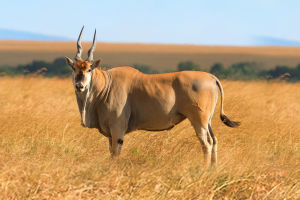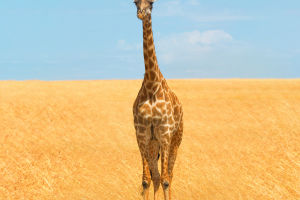The African white rhino is one of the largest rhino species in existence. This majestic animal has attracted much attention due to its wide historical distribution and unique characteristics.
However, the survival of the white rhino is currently facing great threats, mainly due to habitat loss and poaching. Although many conservation projects have been launched, the future of the white rhino is still full of uncertainty.
The African white rhino is divided into two subspecies: the southern white rhino and the northern white rhino. The southern white rhino is relatively large in number and is the main group of white rhinos, distributed in South Africa, Namibia, Botswana, and some other southern African countries.
The situation of the northern white rhino is completely different. Currently, only two female individuals survive. They live in a protected area in Kenya and are under extremely high protection. The uneven population size and distribution of the white rhino make conservation work more complicated.
The white rhino is huge. Adult male white rhinos can weigh up to 2,300 to 2,500 kilograms, while females are slightly lighter. They have wide mouths, which are suitable for herbivorous life.
This is also the origin of the name "square-mouthed rhino." White rhinos feed mainly on grass and can spend most of their time foraging every day.
Their wide mouths can effectively ingest large amounts of grass, making them an important part of the grassland ecosystem in southern Africa. Through this behavior, they maintain the health and diversity of grasslands and indirectly promote the survival of other wildlife.
White rhinos have a unique double horn structure, making them a major target for poachers. The horns of white rhinos are made of keratin, similar to human nails and hair.
However, for a long time, people mistakenly believed that white rhino horns have medicinal value, especially in some Asian countries, where white rhino horns are believed to treat a variety of diseases and symbolize wealth and status.
Therefore, white rhino horns have extremely high value in the illegal market and have become the main driving force for poaching. Rampant poaching has led to a sharp decline in the number of white rhinos, especially the northern white rhino population, which is almost extinct. Although the southern white rhino is more numerous, it is also in a critically endangered state.
To deal with the problems of poaching and population decline, many countries and international organizations have taken a variety of conservation measures. The establishment of protected areas is one of the important means. Kruger National Park in South Africa is one of the core areas for protecting white rhinos.
To prevent poaching, the park has taken multiple security measures, including armed patrols, electronic surveillance, and drone reconnaissance. In addition, many countries have passed legislation to intensify the crackdown on poaching, and illegal possession or trading of rhino horns will face severe legal sanctions.
However, despite the effectiveness of these measures, the poaching of white rhinos has not been completely eradicated. The high demand of the illegal market and the economic difficulties in poor areas have led poachers to take risks, and many white rhinos still lose their lives due to poaching.
To further protect the white rhinos, scientists and conservationists are also exploring other methods, such as preserving the genetic diversity of the white rhino population through artificial breeding and genetic technology.
Especially in the case of the near extinction of the northern white rhino, scientists are trying to save this subspecies through artificial insemination and in vitro fertilization technology. Although these technologies are still in the experimental stage, they provide a glimmer of hope for the future of the white rhino.
However, the future of the white rhino is still full of challenges. Climate change and the impact of human activities are gradually changing their habitats, and the degradation of grasslands and the reduction of water resources have brought new pressures to the survival of the white rhinos.
At the same time, the problem of poaching and illegal trade has not been fundamentally solved. To truly protect the white rhino, the international community must join forces, including strengthening cross-border cooperation, promoting environmental education, and supporting the sustainable development of local communities.
Only through comprehensive measures in many aspects can the white rhino have a chance to get rid of the shadow of extinction and continue to live freely in the grasslands of Africa.
The African white rhino is not only an endangered wild animal, but it also symbolizes the challenges facing global biodiversity. By protecting the white rhino, humans can not only save an endangered species but also contribute to the future of all life on Earth. Although the road ahead is difficult, as long as we persevere, the legend of the white rhino may continue in the land of Africa.


